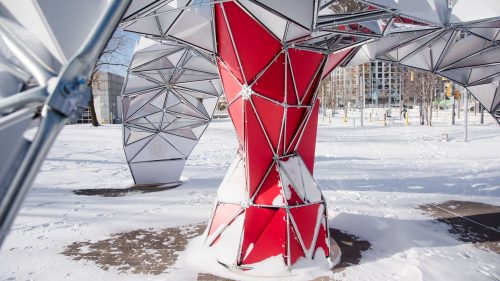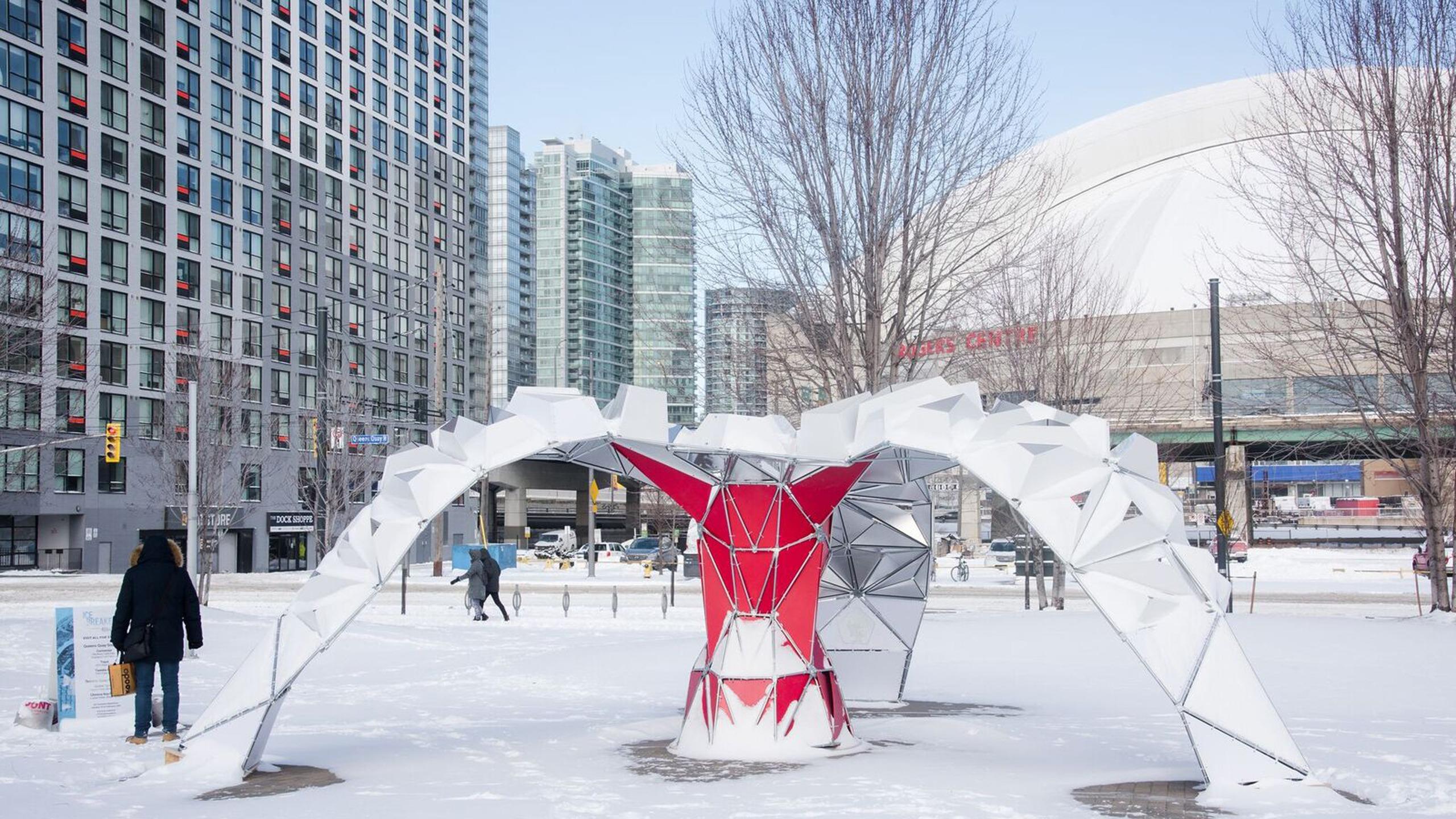By Julia Mastroianni
A group of five Ryerson architecture students are the first student group to ever be chosen for the Ice Breakers waterfront art exhibition that began on Jan. 19.
Gloria Zhou, Tommy Gomez, Vivian Kinuthia, Florencio IV (Vince) Tameta and Tatiana Estrina submitted their design to the international competition as part of their program’s Redux design lab in October of last year. Their design was one of five chosen out of over 60 submissions for the Ice Breakers exhibition.
The exhibition is a collaboration between the Winter Stations, Waterfront Business Improvement Area (WBIA) and PortsToronto. This year, the theme was “Signal Transmission.”
Gomez, a second-year student, said they adapted the theme into their installation, titled “Tripix”, through both the materials and the shape of the physical structure. Tripix, alongside an installation from Greece, from Germany and two from Toronto, will be on display along Queens Quay West until Feb. 24.
“The material inside the design is a mirrored sort of acrylic, and also with these openings toward city views. So the idea is that the mirrored acrylic would have your reflection superimposed on the city behind you,” Gomez said.
“You’d be able to take pictures and share them on social media, because we wanted to talk about the way social media is being used to communicate architecture and design in general with a broader audience,” Gomez added.
The team also incorporated the installation’s location into the design, a spot in HTO Park where three paths converge. “We started creating these arches that arch over these three different paths . . . and unintentionally we started to realize that the shape from a bird’s eye view looked like a flower,” Gomez said.

They continued to tweak the design until it resembled the three petals of the Ontario trillium flower.
Tameta, also a second-year student, explained that the positioning of the three arches was intentional in framing three of Toronto’s landmarks; the CN Tower, the Rogers Centre, and the Lakeshore.
Sasha Smith, social media specialist for the WBIA, said the winning designs were chosen based on how they responded to the theme. “It’s a little bit open to interpretation, but it’s about how we communicate with the landscape and with each other,” she said.
Smith, a Ryerson alumna, visited the campus to watch the team as they constructed their installation. “You can see that the group is really driven, have great ideas and that they actually know what they’re doing as designers and architects,” she said.
The team initially encountered problems transforming their designs into the physical structure. “We had problems figuring out the right materials to use and whether that would sustain the environmental aspects of the site,” said Zhou, a third-year student. “We experimented with PVC, aluminum and multiple types of plastic, but we realized that some of the PVC and some of the acrylic doesn’t sustain weather conditions.”
“When you see it on digital software it’s a lot easier to understand, but when you start making it you run into problems, so the shop technicians were a big help,” Tameta said.
Despite being in second-year, Tameta said he felt confident getting involved with the design lab because first year students have the opportunity to try out most of the software and programs he used for this installation.
“That moment when you transform a design from the schematic to the physical thing is something that I think is really special,” Zhou said.











Leave a Reply